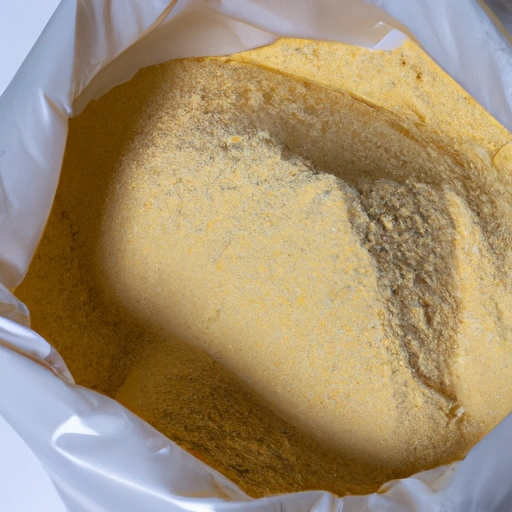Soy Flour
Description

Soy flour is a finely ground powder made from soybeans. After the oil is extracted from the beans, the remaining soybean meat is dried and finely ground into a flour. Not only is soy flour rich in protein and nutrients, but it is also a versatile ingredient used in various culinary applications around the world. It's particularly beneficial for those following a vegan or gluten-free diet.
Common uses
Soy flour is commonly used as a flour substitute, a protein booster, and as a thickening agent in sauces and gravies. It's also frequently utilized in baking, particularly in gluten-free and high-protein goods.
Nutritional value
Calories
Approximately 120 kcal per 1/4 cup (35g).
Protein
Contains around 10g of protein per 1/4 cup (35g).
Fat
Contains about 6g of fat per 1/4 cup (35g), with minimal saturated fat.
Carbohydrates
Consists of about 9g of carbohydrates per 1/4 cup (35g), with a significant part being dietary fiber.
Vitamins
Rich in B vitamins, particularly folate (20% of the Recommended Daily Intake (RDI) in 1/4 cup) and vitamin K.
Minerals
High in minerals like iron (15% of the RDI in 1/4 cup), magnesium, phosphorus, and potassium.
Health benefits
Soy flour is known for its potential to lower cholesterol levels, improve heart health, and provide isoflavones which have been linked to reduced risk of certain cancers. Its high protein content also makes it beneficial for muscle building and repair.
Potential risks
For some individuals, soy can cause allergies or digestive issues. Additionally, there's ongoing debate around the effects of isoflavones on hormone-related conditions, so those with concerns may wish to limit soy consumption.
Common recipes
Used in recipes for bread, muffins, pancakes, and protein bars. Soy flour can be an ingredient in vegetarian meat substitutes and dairy-free cheeses as well.
Cooking methods
Can be used in baking, frying as a batter, or simply as a mix-in to enhance protein content. When baking with soy flour, it's often mixed with other flours to improve texture and taste.
Pairing with other ingredients
Pairs well with flavors such as chocolate, nuts, and fruits in sweet dishes, and complements savory dishes with its nutty flavor profile.
Summary
Soy flour is a protein-rich, gluten-free ingredient perfect for a variety of culinary uses. With its historical roots in Asian cuisine, it's now a global kitchen staple that offers nutritional benefits while catering to dietary restrictions. Whether incorporated into traditional recipes or used as an innovative substitute, soy flour provides a wholesome alternative for health-conscious cooks and those with specific dietary needs.